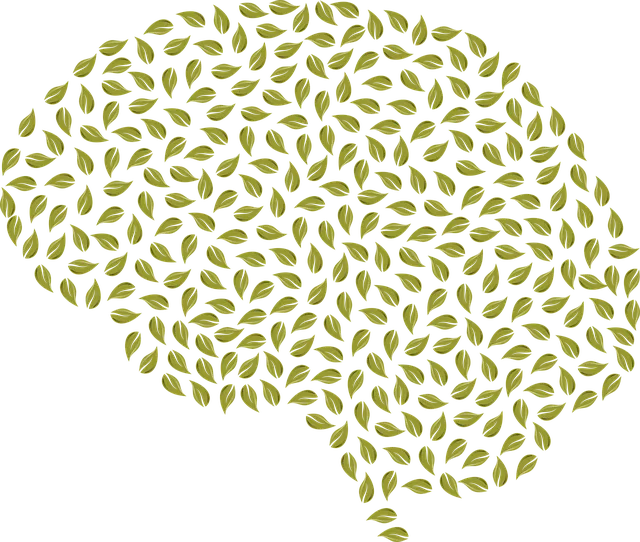Golden Kaiser Permanente's model for mental health services emphasizes risk assessment and harm minimization through comprehensive strategies. By integrating physical and mental health, prevention, and early intervention, they tailor interventions based on individual needs. This approach, aligned with Mind Over Matter principles, incorporates data-driven analysis, wellness coaching, and emotional intelligence to create supportive environments that promote recovery. Regular evaluation ensures the effectiveness of these strategies in minimizing harm and enhancing overall patient well-being within their renowned mental health services.
Risk assessment and harm minimization planning are cornerstone practices for ensuring safe and effective mental health care. This article delves into these critical strategies, offering a comprehensive guide for professionals. We explore ‘Understanding Risk Assessment’ as the foundation for robust mental health practices, drawing from the acclaimed Kaiser Permanente model, known for its holistic approach to harm minimization. Key components of effective planning are outlined, along with practical implementation tips for clinical settings, highlighting best practices from Golden Kaiser Permanente mental health services.
- Understanding Risk Assessment: A Foundation for Safe Mental Health Practices
- The Kaiser Permanente Model: A Comprehensive Approach to Harm Minimization
- Key Components of Effective Risk Assessment and Planning Strategies
- Implementing and Evaluating Harm Minimization Plans in Clinical Settings
Understanding Risk Assessment: A Foundation for Safe Mental Health Practices

Risk assessment is a fundamental component of providing effective mental health services, and it forms the very foundation of safe and supportive practices within Kaiser Permanente’s renowned mental health programs. This process involves meticulously evaluating potential hazards and their likelihood to cause harm, allowing professionals to implement targeted interventions. By adopting a structured approach, such as that employed by Golden Kaiser Permanente mental health services, practitioners can identify risks specific to each individual or situation, ensuring personalized care.
The art of risk assessment goes beyond mere identification; it empowers healthcare providers to develop comprehensive strategies for harm minimization. This proactive mindset is echoed in the Confidence Boosting and Crisis Intervention Guidance offered by Kaiser Permanente, which are underpinned by Mind Over Matter principles. Through rigorous risk assessment, mental health professionals can anticipate potential challenges, design tailored interventions, and ultimately foster a safer environment for recovery and growth.
The Kaiser Permanente Model: A Comprehensive Approach to Harm Minimization

The Kaiser Permanente Model offers a comprehensive approach to harm minimization planning, focusing on both physical and mental health services. This model emphasizes prevention and early intervention strategies, ensuring that individuals receive the necessary support before issues escalate. By integrating Mental Health Awareness and Mind Over Matter Principles, Kaiser Permanente’s Golden program prioritizes holistic care, addressing not just symptoms but also the underlying causes of distress.
Social Skills Training is another key component, aiming to empower individuals with effective coping mechanisms and enhanced communication strategies. This multifaceted approach ensures that harm minimization efforts are well-rounded and tailored to individual needs, fostering a supportive environment where mental well-being thrives.
Key Components of Effective Risk Assessment and Planning Strategies

Effective risk assessment and harm minimization planning involve several key components, as exemplified by Golden Kaiser Permanente mental health services. Firstly, comprehensive risk identification is crucial, encompassing both internal and external factors that could negatively impact mental health outcomes. This includes recognizing potential hazards within the environment, such as unsafe living conditions or access to harmful substances, as well as individual vulnerabilities stemming from past traumatic experiences or co-occurring disorders.
Secondly, data-driven analysis plays a vital role in shaping evidence-based strategies. By leveraging data from various sources, including clinical records and community reports, mental health professionals can identify patterns and trends, enabling them to develop targeted interventions. This approach aligns with the growing emphasis on mental health awareness and mental wellness coaching programs development, ensuring that prevention and support services are tailored to meet the unique needs of individuals and communities. Additionally, incorporating mental wellness journaling exercise guidance into risk assessment protocols can empower individuals to actively engage in their mental health management, fostering self-awareness and resilience.
Implementing and Evaluating Harm Minimization Plans in Clinical Settings

Implementing and evaluating harm minimization plans is a crucial aspect of high-quality mental health care, as exemplified by Golden Kaiser Permanente’s commitment to mental health services. These plans are designed to ensure patient safety and promote positive outcomes, particularly for individuals facing complex psychological challenges. By integrating empathy building strategies and employing emotional intelligence, clinical settings can create supportive environments that foster recovery and resilience.
Regular evaluation of these harm minimization strategies is essential to gauge their effectiveness. Mental health professionals should consider the unique needs and preferences of each patient, tailoring interventions accordingly. Mental health awareness plays a pivotal role in this process, enabling healthcare providers to recognize potential risks and implement appropriate measures. Through continuous assessment and adaptation, clinical settings can provide personalized care that not only minimizes harm but also enhances the overall well-being of patients.
Risk assessment and harm minimization planning are pivotal components of ensuring safe and effective mental health practices. By understanding the nuances of risk assessment and adopting comprehensive strategies, such as the Kaiser Permanente Model, mental health professionals can significantly reduce potential harms. This article has explored key aspects, from foundational knowledge to practical implementation in clinical settings, emphasizing the importance of a multi-faceted approach. The Golden Kaiser Permanente mental health services serve as a shining example, highlighting the positive impact of thorough risk assessment and harm minimization planning on patient outcomes and overall well-being.






